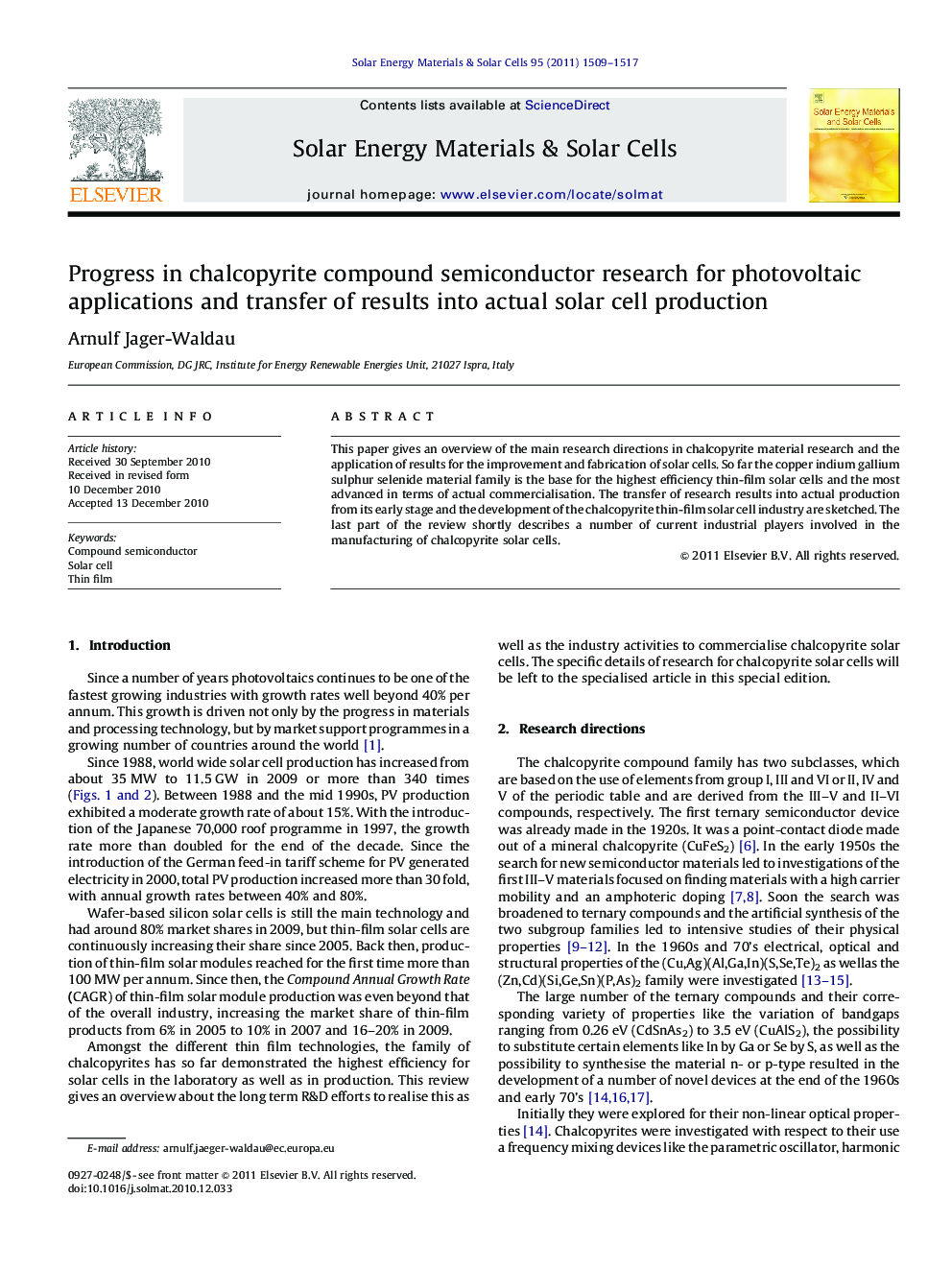| Article ID | Journal | Published Year | Pages | File Type |
|---|---|---|---|---|
| 79429 | Solar Energy Materials and Solar Cells | 2011 | 9 Pages |
This paper gives an overview of the main research directions in chalcopyrite material research and the application of results for the improvement and fabrication of solar cells. So far the copper indium gallium sulphur selenide material family is the base for the highest efficiency thin-film solar cells and the most advanced in terms of actual commercialisation. The transfer of research results into actual production from its early stage and the development of the chalcopyrite thin-film solar cell industry are sketched. The last part of the review shortly describes a number of current industrial players involved in the manufacturing of chalcopyrite solar cells.
Graphical AbstractFigure optionsDownload full-size imageDownload as PowerPoint slideResearch highlights► Between 1988 and 2009, world wide solar cell production has increased from about 35 MW to 11.5 GW or more than 340 times. ► First ternary semiconductor devices were already made in the 1920's. ► First CuInSe2/CdS solar cell device with 12.5% efficiency was produced at the Bell Laboratories in 1974. ► In the early 1980's industrial research for CIS solar cells started. ► First commercial 5 W and 10 W modules were available on the market in 1997. ► In 2009, a total of 166 MW of CIGSSe solar modules was manufactured worldwide. ► World record of a 20.3% efficient Cu(In,Ga)Se2 small area solar cell achieved in 2010.
